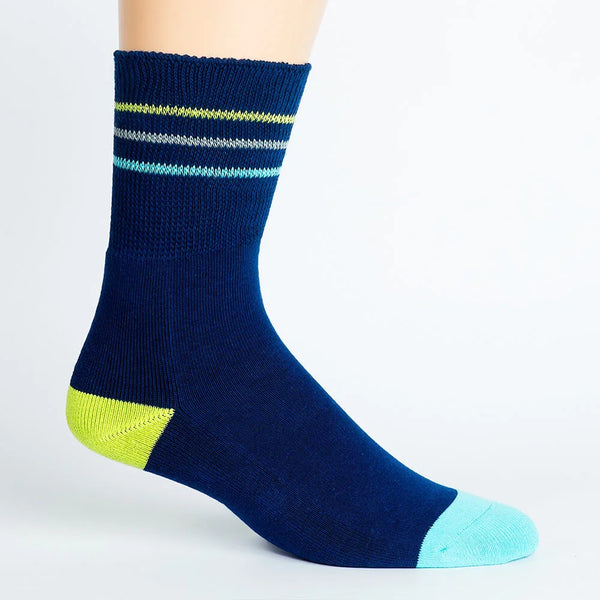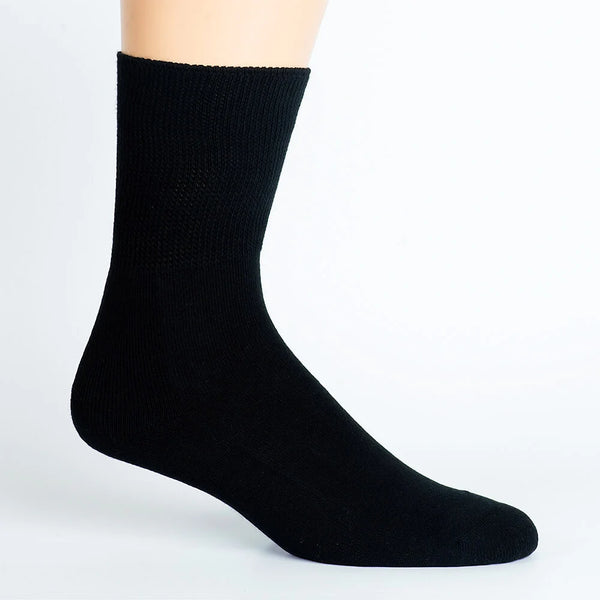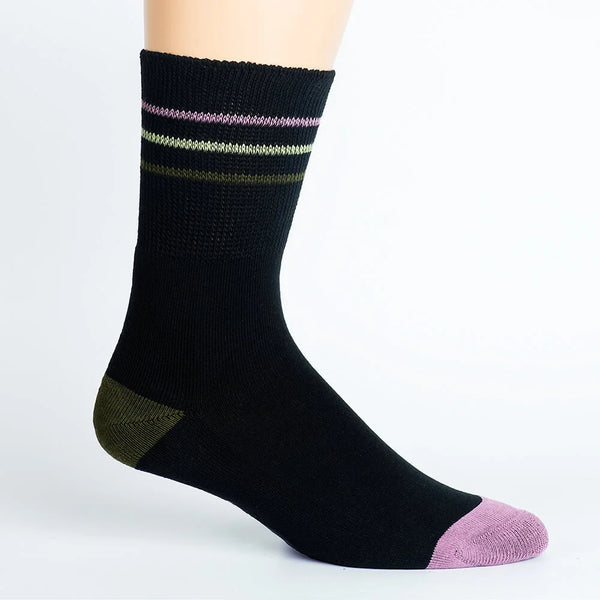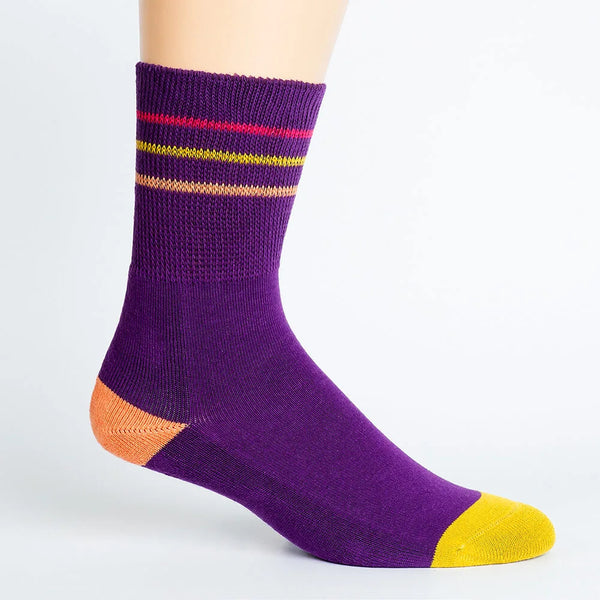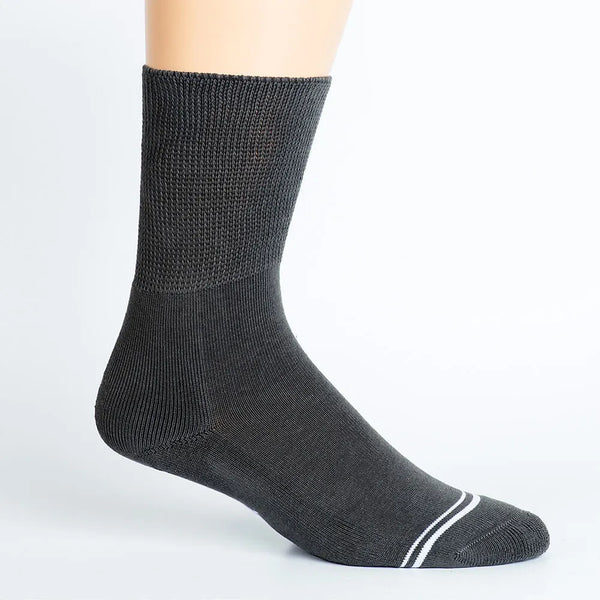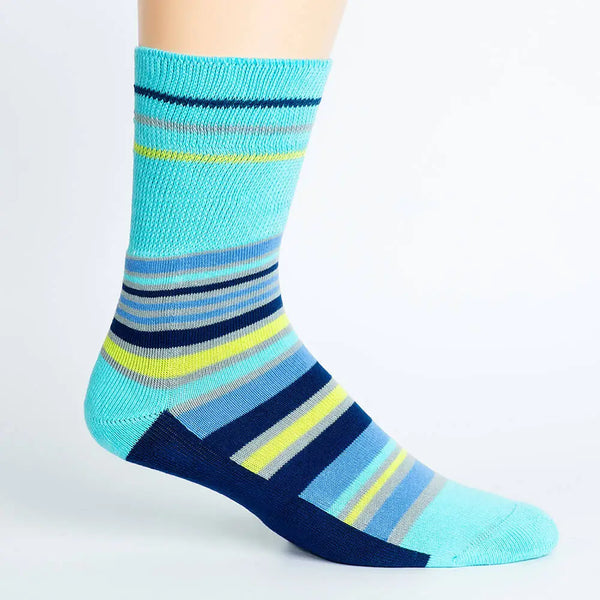How to Choose the Right Socks if You Have Diabetes

When it comes to managing diabetes, the importance of foot care cannot be overstated. Diabetes often leads to complications like poor circulation, nerve damage, and increased risk of foot ulcers. Wearing the right socks can make a significant difference in protecting your feet, preventing injuries, and improving overall comfort.
But with so many options available, how do you know which socks are best for you? In this guide, we’ll walk you through the essential factors to consider when selecting diabetic socks, including material, fit, support level, and key features.
Why Diabetic Socks Are Important
Before diving into what to look for in diabetic socks, let’s briefly discuss why they are so crucial for people with diabetes. Diabetic socks are designed to reduce the risk of foot complications by:
- Improving circulation
- Preventing friction and blisters
- Wicking away moisture to reduce infections
- Providing extra cushioning for protection
With that in mind, here are the key factors to consider when selecting diabetic socks that meet your needs.
1. Look for Non-Binding, Seamless Designs
One of the most important features to look for in diabetic socks is a non-binding top. Socks that are too tight can restrict blood flow, worsening the poor circulation often associated with diabetes. Instead, choose socks that offer a loose, non-restrictive fit around the calf, allowing blood to flow freely.
Additionally, socks with seamless construction are a must for avoiding friction that can lead to blisters or ulcers. Seams can rub against the skin, causing irritation and pressure points, which can be dangerous for those with diabetic neuropathy.
- Pro Tip: Avoid socks with tight elastic bands or bulky seams. Choose socks labeled as non-binding or seamless for the best fit and comfort.
2. Prioritize Moisture-Wicking Materials
Moisture control is another critical factor when selecting diabetic socks. Moisture-wicking fabrics draw sweat away from your skin, reducing the risk of infections, blisters, and fungal growth. For diabetics, wet skin can quickly become a problem, leading to breakdowns that open the door to infections.
Look for socks made from materials like bamboo, cotton blends, or synthetic fabrics that wick away moisture and keep your feet dry throughout the day. Diabetic socks with antimicrobial properties also help prevent bacteria from building up, offering an added layer of protection.
- Pro Tip: If you have excessively sweaty feet, moisture-wicking socks are essential. Opt for socks that feature bamboo or cotton.
3. Choose Socks with Extra Cushioning
People with diabetes are more prone to foot injuries due to reduced sensation in their feet (neuropathy). Choosing socks with extra cushioning in the soles, heels, and toes can provide added protection and comfort.
Cushioned diabetic socks help absorb shock and prevent injuries from bumps or pressure points. This is especially important if you spend a lot of time standing or walking, as the extra padding helps reduce the risk of sore spots or blisters.
- Pro Tip: For maximum comfort, look for socks with padded soles or cushioning in high-impact areas like the heel and ball of the foot.
4. Focus on Proper Fit and Sizing
Proper fit is crucial when choosing diabetic socks. Socks that are too tight can restrict circulation, while socks that are too loose can bunch up and cause friction, leading to blisters.
When selecting socks, check the size chart and measure your foot and calf to ensure a proper fit. Diabetic socks often come in wide-calf options for individuals with larger legs, ensuring that the socks don’t constrict the skin.
- Pro Tip: Avoid socks that leave marks on your legs, as this is a sign they are too tight. A good diabetic sock should fit snugly without being restrictive.
5. Antimicrobial Properties for Infection Prevention
If you’re prone to infections, you may want to consider antimicrobial diabetic socks. These socks are treated with special materials to prevent the growth of bacteria and fungi, reducing the risk of infections, odors, and other complications.
- Pro Tip: Look for socks with antimicrobial properties if you have a history of foot infections or spend long hours in your socks each day.
6. Consider Temperature Regulation
For people with diabetes, temperature regulation can be a challenge, especially in the feet. Socks made from materials like cotton or bamboo are ideal for regulating temperature and keeping feet warm without overheating. These materials are naturally breathable, making them a good choice for year-round wear.
- Pro Tip: If you suffer from cold feet due to poor circulation, choose socks with temperature-regulating properties to keep your feet warm and comfortable.

Conclusion: Take Control of Your Foot Health
Choosing the right socks is an essential part of managing diabetes and keeping your feet healthy. Whether you need socks with extra cushioning, moisture-wicking materials, or compression support, there’s a diabetic sock designed to meet your specific needs.
At Dr. Johnny’s, we offer a range of diabetic socks designed by experts with over 30 years of experience. Our socks are non-binding, seamless, moisture-wicking, and made with your comfort and foot health in mind.
Take the next step in protecting your feet and explore our diabetic sock collection today.
SHARE:



